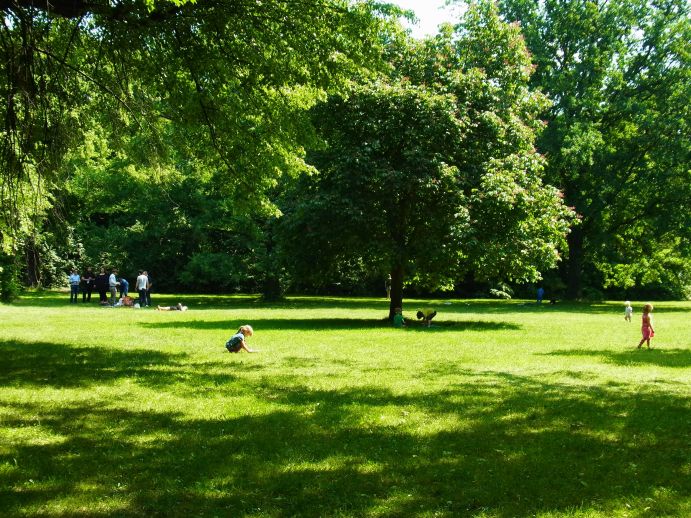GreenEquityHEALTH - Environmental-health Interactions in Cities – Challenges for Human Well-being under Global Changes
Cities are hotspots for global change. Climate change, urbanization and demographic change are affecting urban areas and their residents today and will pose a range of challenges to urban planning in the future.

Climate change is already affecting Europe's ecosystems, with potentially severe effects on biodiversity and ecosystem functions. Urban residents are likely to experience climate change impacts most directly in cities. Main climate impacts on cities include a rise in air temperature (in particular, weather extremes such as heat waves), reduction in air quality and higher ozone concentration in the troposphere (due to higher air temperatures and low air circulation in the cities), as well as extreme precipitation events and biological responses to a changing climate. Urbanization is increasingly affecting the global earth surface as well. With ongoing urbanization, a range of interlinked pressures, such as land conversion, soil sealing, densification of built-up areas, related decrease in urban green spaces and increase of traffic and related effects of air pollution pose significant challenges to ecosystem functionality and human well-being all around the world. Every year, urban residents die prematurely due to ambient air pollution. In addition, high summer temperatures lead to increased number of illnesses, deaths and hospitalizations, especially among vulnerable population groups such as elderly people. There is also growing evidence for disproportionate heat and air pollution-related health burdens associated with unequal distribution of green space in urban areas. By providing urban ecosystem services, urban green spaces can help to mitigate the described impacts of global changes. Bolund and Hunhammar (1999) describe urban ecosystem services as values and benefits urban residents may have from ecosystems located within a city. In particular, urban trees have the potential to mitigate heat by giving shade and by cooling from evapotranspiration. They also reduce air pollution by their uptake of pollutants. Hence, urban parks and urban forest decrease residents' exposure to heat and pollution but simultaneously provide space for recreation and physical activity. They may, thus, help decreasing prevalence of severe health problems among children and the elderly.
A growing body of literature shows the potential benefits of urban green spaces. These potential benefits are, however, often generalized, not quantified and undifferentiated by local climatic conditions, vegetation types, public interest, or culture and age specific values. There is a lack of empirical date for the valuation of the effectiveness of using urban green spaces to counteract heat, air pollution and related illness.
Project Objectives
The research group GreenEquityHEALTH provides evidence to address processes and challenges related to global changes and to help preparing for and designing future developments. Quantified evidence will be produced showing how the benefits of urban trees such as lowering air temperature and improving air quality are influenced by different temperature pressure. The junior research group will identify how plant traits react under different temperature conditions and will identify how this will potentially affect the indirect benefits to human health. The group will establish the link between global challenges – urban nature/plant traits – and public health by considering environmental justice aspects.
Project Management
Dr. Nadja Kabisch
Humboldt-Universität Berlin
Geographisches Institut
Unter den Linden 6, 10099 Berlin
Tel.: +49 511 762 3591
E-Mail: nadja.kabisch@geo.hu-berlin.de
Last updated on



